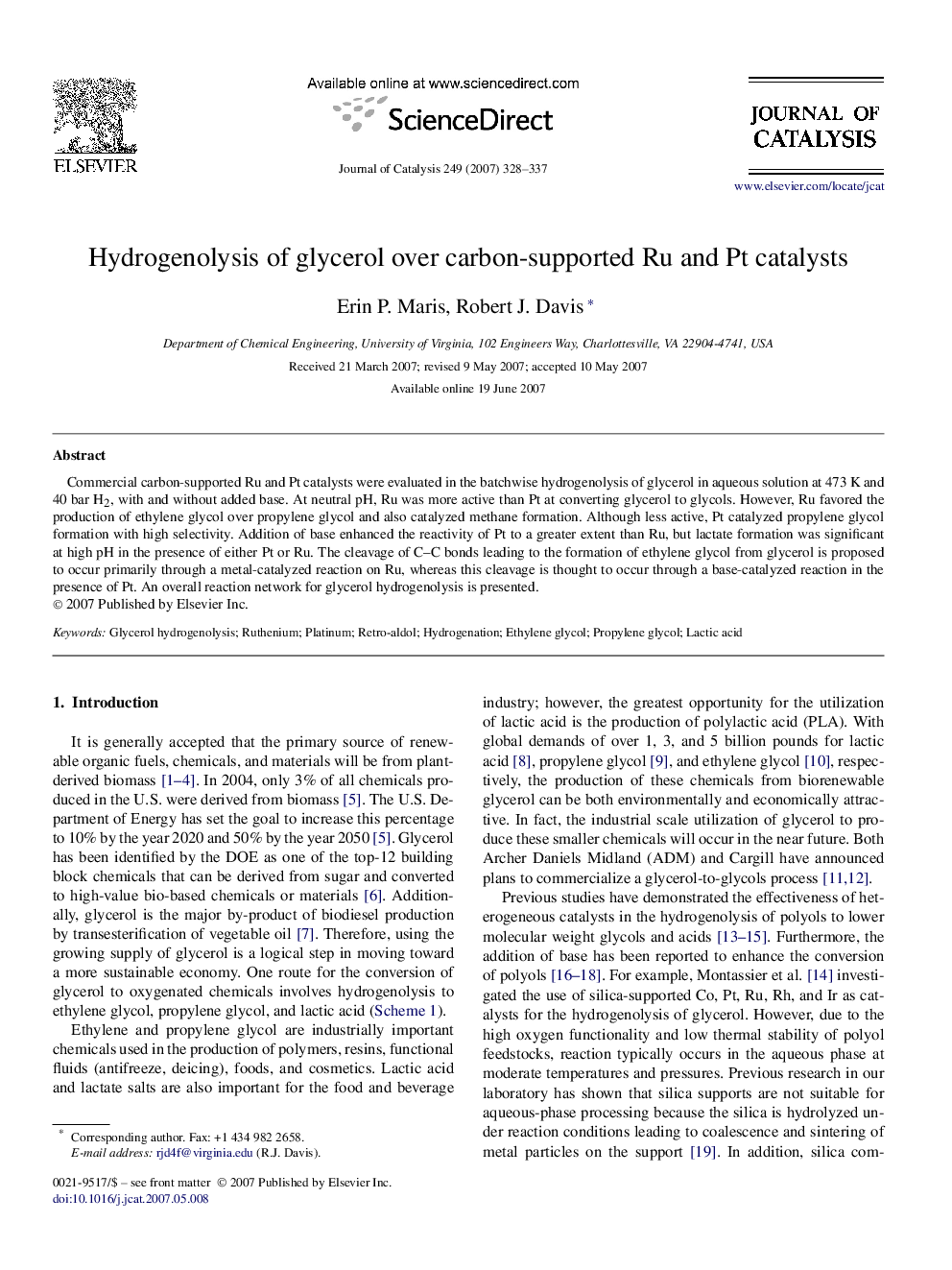| Article ID | Journal | Published Year | Pages | File Type |
|---|---|---|---|---|
| 62826 | Journal of Catalysis | 2007 | 10 Pages |
Commercial carbon-supported Ru and Pt catalysts were evaluated in the batchwise hydrogenolysis of glycerol in aqueous solution at 473 K and 40 bar H2, with and without added base. At neutral pH, Ru was more active than Pt at converting glycerol to glycols. However, Ru favored the production of ethylene glycol over propylene glycol and also catalyzed methane formation. Although less active, Pt catalyzed propylene glycol formation with high selectivity. Addition of base enhanced the reactivity of Pt to a greater extent than Ru, but lactate formation was significant at high pH in the presence of either Pt or Ru. The cleavage of CC bonds leading to the formation of ethylene glycol from glycerol is proposed to occur primarily through a metal-catalyzed reaction on Ru, whereas this cleavage is thought to occur through a base-catalyzed reaction in the presence of Pt. An overall reaction network for glycerol hydrogenolysis is presented.
